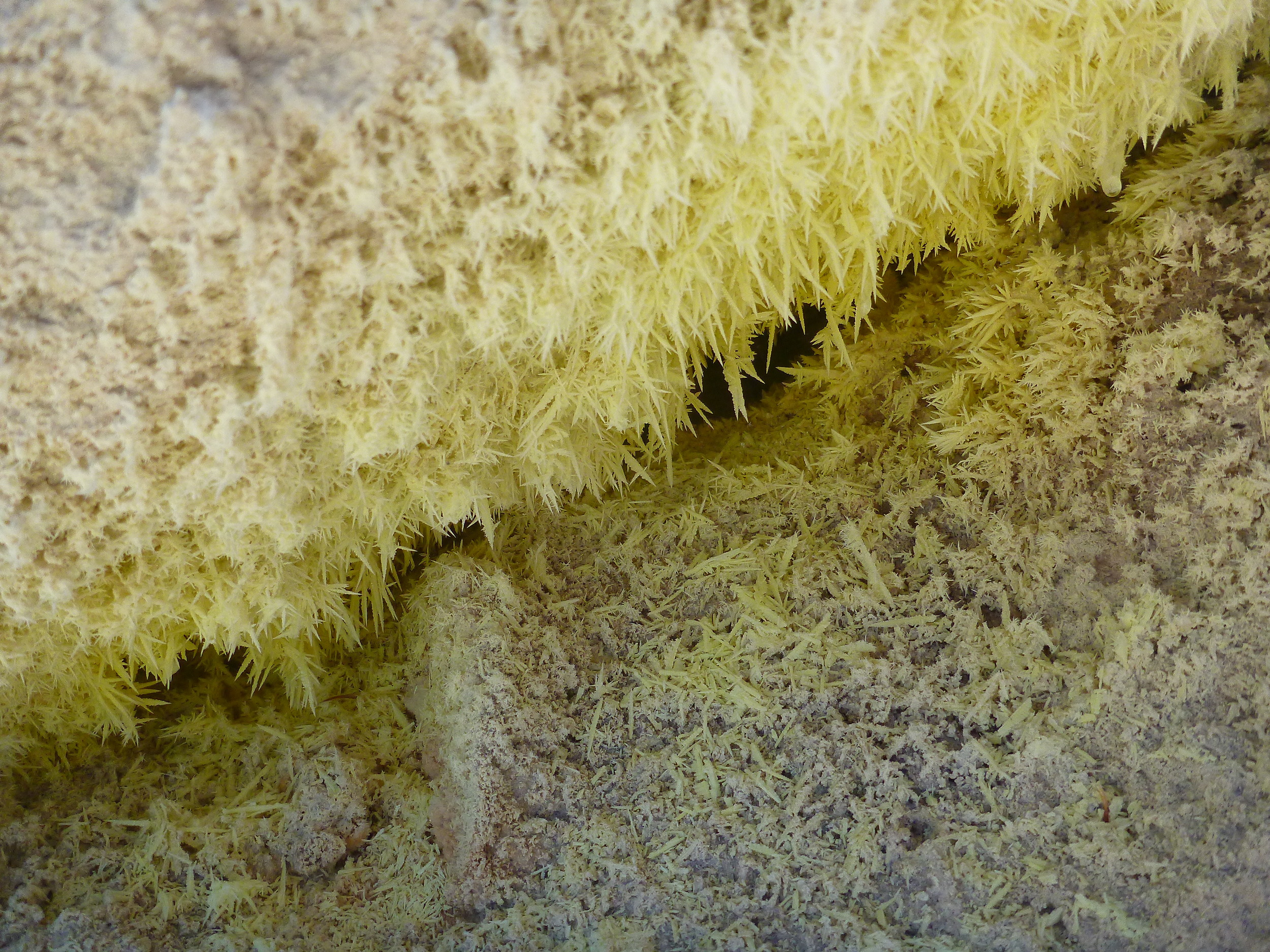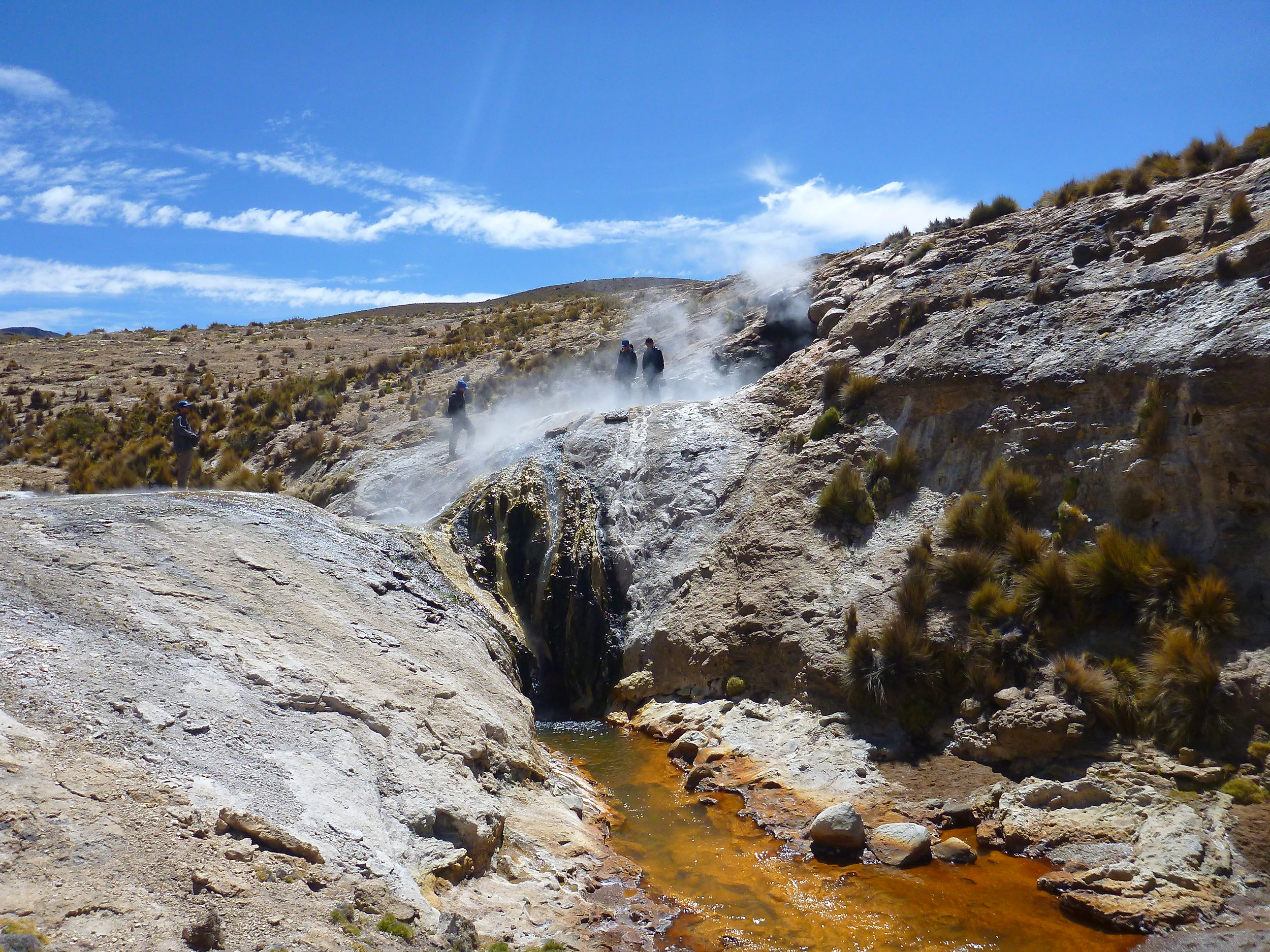After a relaxing day off, we were ready for a few more volcanoes. We left beautiful Arequipa city and headed south to Ticsani Volcano. It was an interesting target, because our OVI colleagues had noticed Ticsani's fumarolic activity to be increasing.
The slope of Ticsani is blanketed in sulphur, and the many fumaroles looked perfect for direct sampling! We started probing the ground with some high-tech devices (a meter-long titanium tube) and quickly stumbled onto an old geothermal exploration well completely filled with well-formed sulphur crystals. We started taking measurements, but while waiting for them we realized something was slightly wrong… the soles of Ian’s boots had started to melt! So did Nial’s jacket! And so did Aaron and Yves’ trousers - they were foolishly not wearing their Supertrousers (proven to be fumarole-proof) at the time.
After duct taping our clothes back together, we climbed Tutupaca volcano, also known as the "Peruvian Mount St. Helens", because the whole volcano had been dissected by a huge flank collapse resulting in an impressive 7 km long debris avalanche. Unlike Mt St. Helens, where the deposit is gradually becoming forested over, the desert climate of southern Peru has left this colossal trace of Tutupaca’s turbulent past entirely pristine.
Tutupaca’s fumaroles were very small and diffuse making them difficult to sample without contamination by air. The measurements were bad and we got quite frustrated. With the bitter taste of failure, an unwelcome first on the Trail by Fire, we had to bounce back so drove straight on to the next active volcano: Yucamani.
The volcanic gases from Yucamani are conveniently coming out of… natural hot springs. After sampling a few, we closed this chapter, and this month in Peru by a well-deserved "direct sampling" of the Yucamani hot springs.
With never a dull moment, a landslide forced the closure of the highway back to Arequipa. The alternate route was... "interesting"...
Ticsani, Tutupaca and Yucamani are three very lightly sleeping giants. Checking their breath regularly, as we’ve done under the guidance of our friend Fredy Apaza (of OVI), could help forecast their next awakening.


















